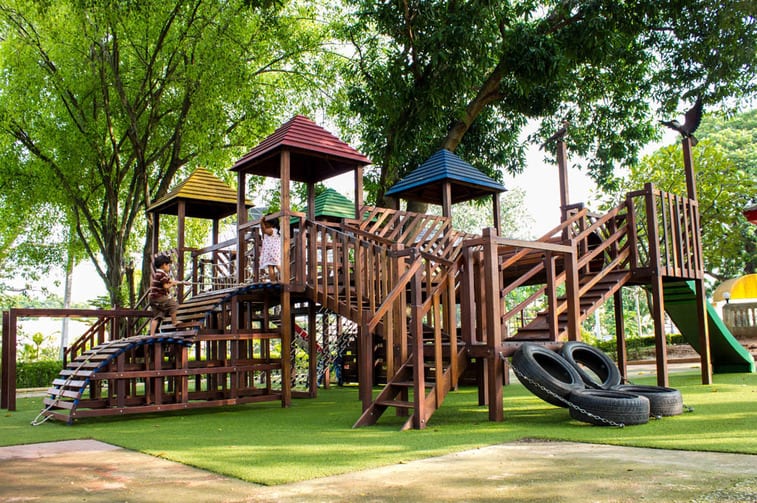
Schools are getting more and more passionate about including STEM lessons and activities in their curriculum. STEM education, or Science, Technology, Engineering, and Mathematics, is an integrative approach to teaching these subjects comprehensively rather than as four separate subjects. STEM education utilizes real-world applications not only to encourage students to think critically and problem-solve effectively but also help prepare students for proficiency in STEM-related career fields, which are on the rise. While many younger students are interested in STEM activities and careers, they often lose interest before graduating high school, leading them to pursue other careers. Predictions about the future job market include significant increases in the need for STEM-related professionals. This is all the more reason to encourage our students to keep engaging in STEM activities and embracing STEM education.
While some schools may have more access to STEM materials than others, any school (or parent, for that matter) can give their students the opportunity to embrace STEM activities with a simple and inexpensive material: cardboard. You can find cardboard anywhere and for cheap, if not free. It’s versatile, easy to use, and an excellent teaching tool. We’ve all seen kids who are more interested in the box the toy came in than the toy itself, so why not embrace that?
Opportunities for cardboard STEM projects are truly endless. You can give your students several, a few, or no additional supplies, or you can allow them to collect their own supplies as needed. You can give them specific instructions as to what they should create, or you can give them no direction and see what they can come up with. No matter how much you guide them in the creation of their cardboard STEM project, be sure to remind them that part of STEM education is trial and error. If something doesn’t work, have them redo calculations or measurements and try again. Engineers and scientists are the world’s best problem solvers, and your students can join them in their quest for excellent critical thinking skills and incredible and imaginative STEM creations.
Here are a few categories your students could focus on during their next cardboard STEM project.
Something That Moves
Whether it be a windmill, a wheel, or flapping wings, encourage students to create something that moves. This means that some part of their final project should move easily, likely propelled by them moving it. If they want to be even more creative, they can come up with a way to make it move by itself. Maybe they could use a fan to spin windmill blades or set up a ramp for their final piece to roll down. Moving parts are much more complex than they originally seem, so be sure to give your students plenty of direction here and reassure them that failure is an acceptable part of the process as long as they learn from it.
Something Sturdy
Think strong and stable here. Have students build a bridge that can support heavy items, a bookshelf that can hold books, or a chair that can hold one of them! Have your students look up cardboard furniture to check out some innovative designs that incorporate strength, and have them do research about the strongest types of bases for sturdy objects (think triangle). You can also look up the cardboard bridge challenge and create your own version of it to test your students’ engineering concepts and application.
Something Useful
Have your students imagine that they are trapped on a desert island with only cardboard and a few basic materials. What would they make? What about if they only had some cardboard in a city and needed to make some money? Come up with some creative prompts to get their brains thinking. Or if worst comes to worst, you can have them Google “useful things to make with cardboard.” This is ideally something they would actually use, whether it be a phone amplifier, a pet house, a clock, or a lampshade.
Something That Rolls
This can be as basic or complex as you or your students wish. You could challenge them to make a sphere, which sounds simple but could be quite complex. You could have them create a car with wheels that actually roll or a tank-like vehicle with tracks that move. You could add a fun challenge to the final presentation of the project by having the students race their rolling creations to see whose rolling design was the most effective for speed.
Something to Get Inside
This might take up more room than you have, but younger students especially love having little forts and hideouts, so why not have them make one? It could be a knight’s fortress, a fairy princess castle, or a humble cottage, but it should fit at least one student inside it easily. Ensure your students think about proper dimensions as they cut the cardboard out, and remember to include a way to get in and out. They also need to make sure the sides and top are secured well enough to not topple over if the person going in or out bumps the walls.
Something That Moves Something Else
Think about a rocket launcher, a marble run, a pinball machine, and the like. The goal here is to create something out of cardboard that allows or forces something else to move. A rocket launcher may use a rubber band to shoot pom-poms, while a marble run may use gravity to move a marble downward. Again, feel free to give your students as little or as much direction as you’d like.
Something to Entertain
A game board, a puppet show theater, or a marble maze all fit into this category. This could be played with (or used to entertain otherwise, such as a puppet show theater) long after the project is complete.
Something That Floats
Challenge your students to learn about buoyancy and how boats and other watercraft stay afloat. Then give them a challenge to create something that floats and be sure to test them out when the projects are done. You may wish to have them stick to just making boats, or you may open up the possibilities to any object, as long as it floats. You can allow them to use other objects if you wish, but be sure to be clear about what is off-limits in terms of floatation devices.
Something That Makes Noise
Younger kids especially love to play musical instruments; they’re even more fun if homemade! Think about cardboard guitars, xylophones, shakers, and more. It’s up to you if you let your students utilize outside noisemakers, such as bells or mallets, but be sure to give them plenty of opportunities to explore how hollow objects make noise and how tightly pulled strings and rubber bands can create sound as well.
Something to Wear
From hats to shoes to a soldier’s armor, having students make something to wear out of cardboard is incredibly fun. You could allow them to make jewelry or other accessories as well. Students may wish to use colorful duct tape, paint, or markers to decorate their cardboard clothing, but be sure they focus on good construction and proper fit, as well as the ability to put the item on and take it off without breaking it.
Something to Explore
This could end up taking up your entire classroom, so proceed with caution if you decide to go this route. A giant box fort or a box tunnel is what we have in mind for this one. Let students use giant cardboard boxes (that they can fit inside) to create a long and winding tunnel to crawl through. Be sure to have little hideouts and peek-out areas throughout!


